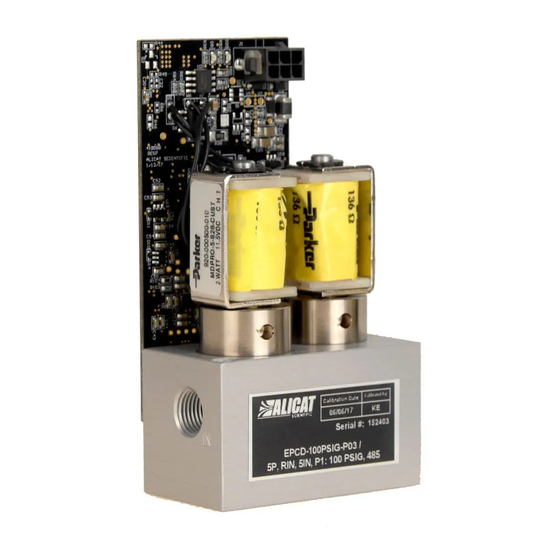Alicat Scientific EPCD Series Manuel d'utilisation - Page 13
Parcourez en ligne ou téléchargez le pdf Manuel d'utilisation pour {nom_de_la_catégorie} Alicat Scientific EPCD Series. Alicat Scientific EPCD Series 17 pages. Pressure vacuum controller

PID Tuning:
Your flow controller uses a closed-loop algorithm to determine how to
actuate its valve(s) in order to achieve the commanded setpoint. We have
tuned these settings for your specific operating conditions, but changes to
your process sometimes require on-site adjustments to maintain optimal
control performance. If you encounter issues with control stability,
oscillation, or speed of response, fine-tuning your closed loop control may
help.
Changing Gain Values
The only way to adjust The P, D, and I gains on an EPC or EPCD device is by
adjusting registers 21, 22, and 23, respectively.
For more information on reading and adjusting 16-Bit registers, as well as
definitions of the functionality of registers on the EPC or EPCD device please
download the Alicat Serial Primer at:
Tuning the PD/PDF control algorithm
The EPC controller's default control algorithm (PD) employs pseudo-
derivative feedback (PDF) control, which uses two editable variables:
The larger the D gain, the slower the controller will correct errors
between the commanded setpoint and the measured process value.
This is equivalent to the P variable in common PDF controllers.
The larger the P gain, the faster the controller will correct for offsets
based on the size of the errors and the amount of time they have
occurred. This is equivalent to the I variable in common PDF
controllers.
✓
Note: The D and P variables in the PD/PDF control algorithm are more
typically referred to as P and I, respectively, in PDF
Alicat.com/drivers
13
